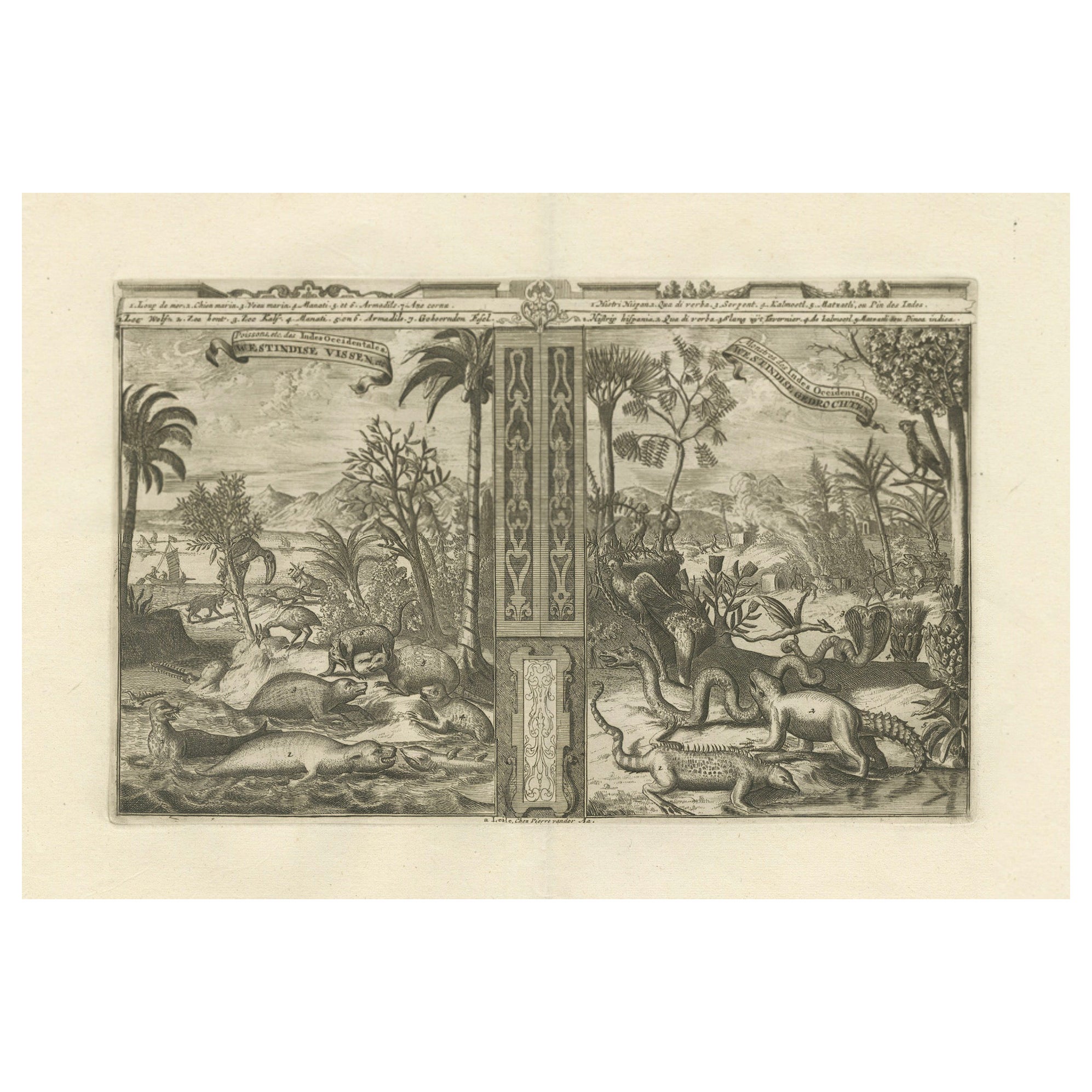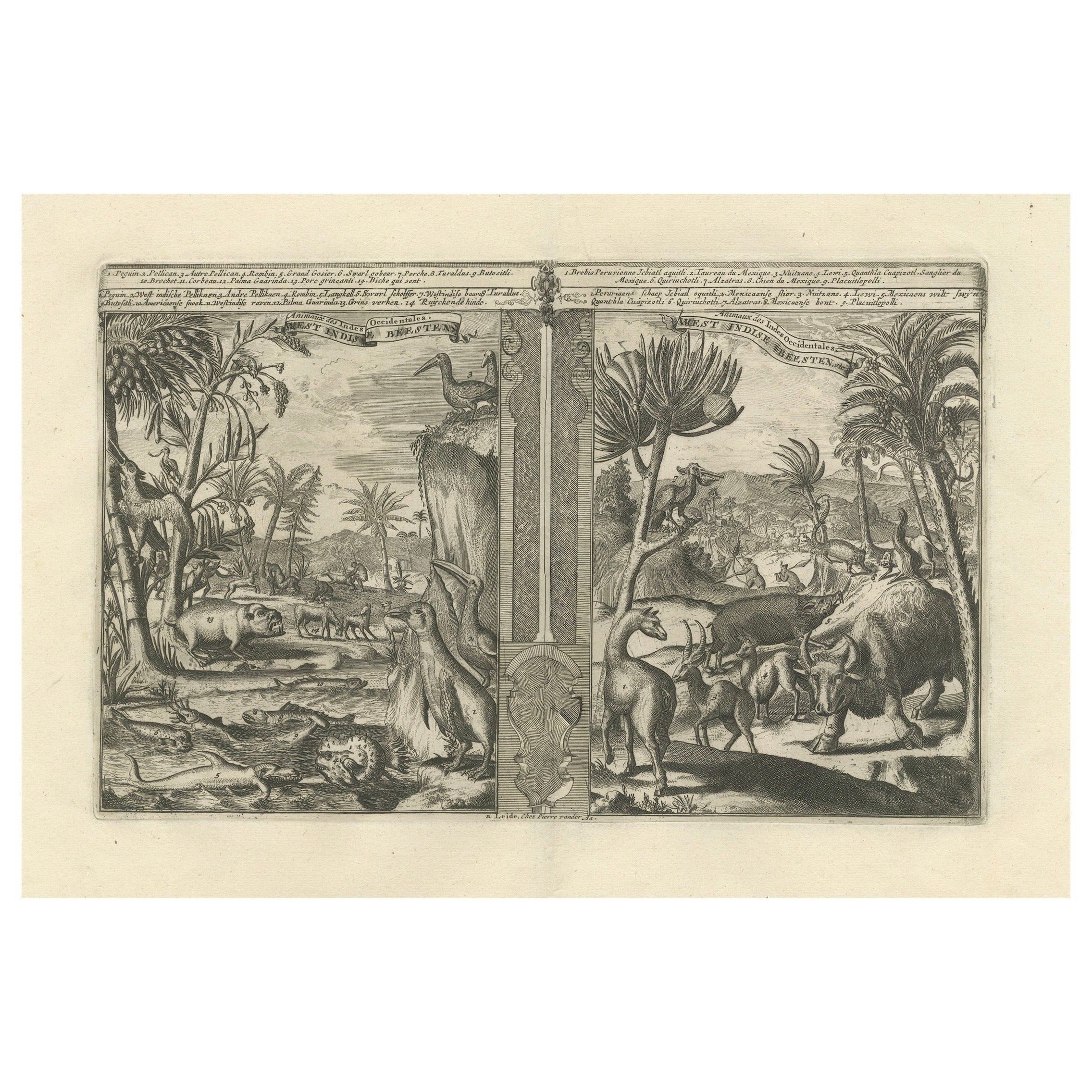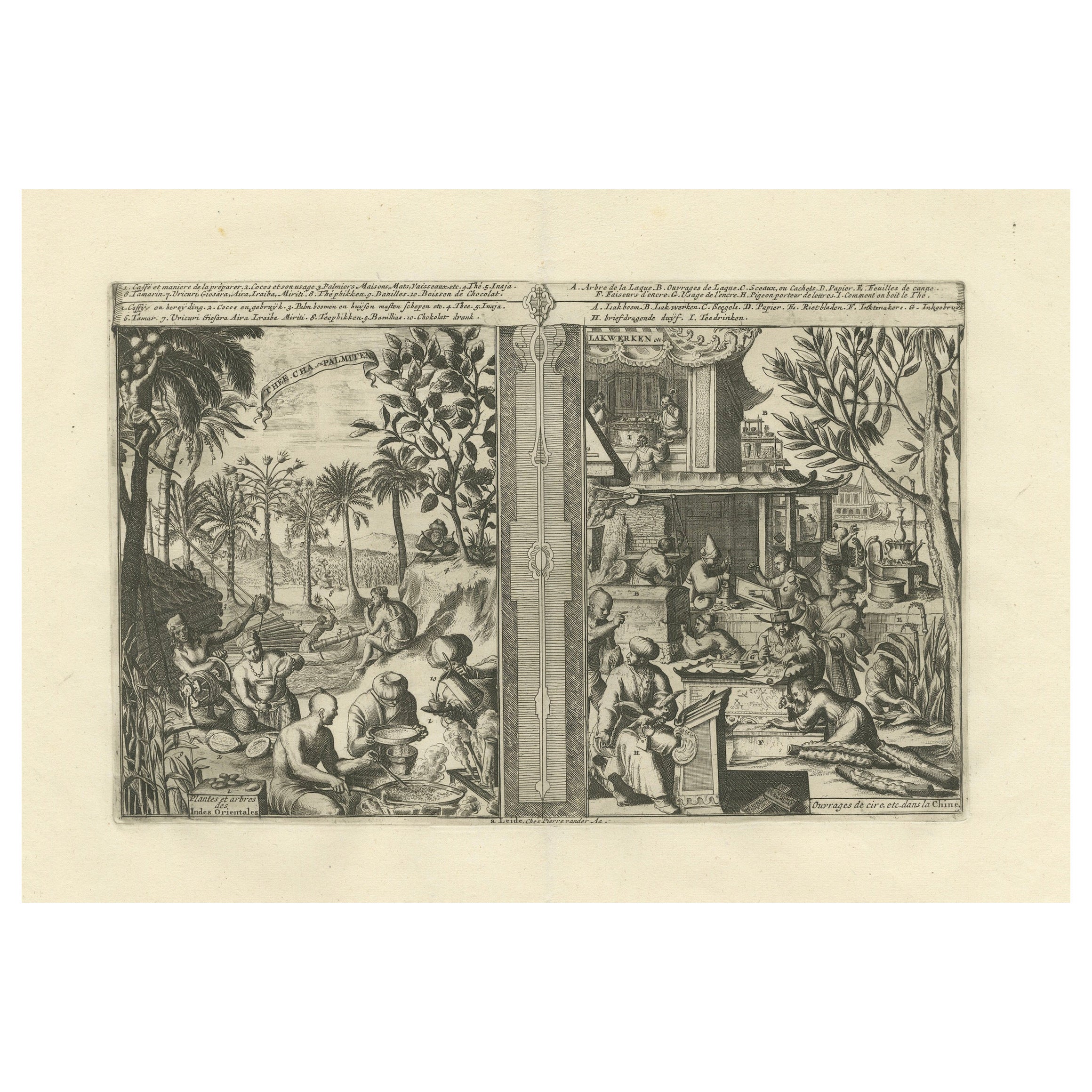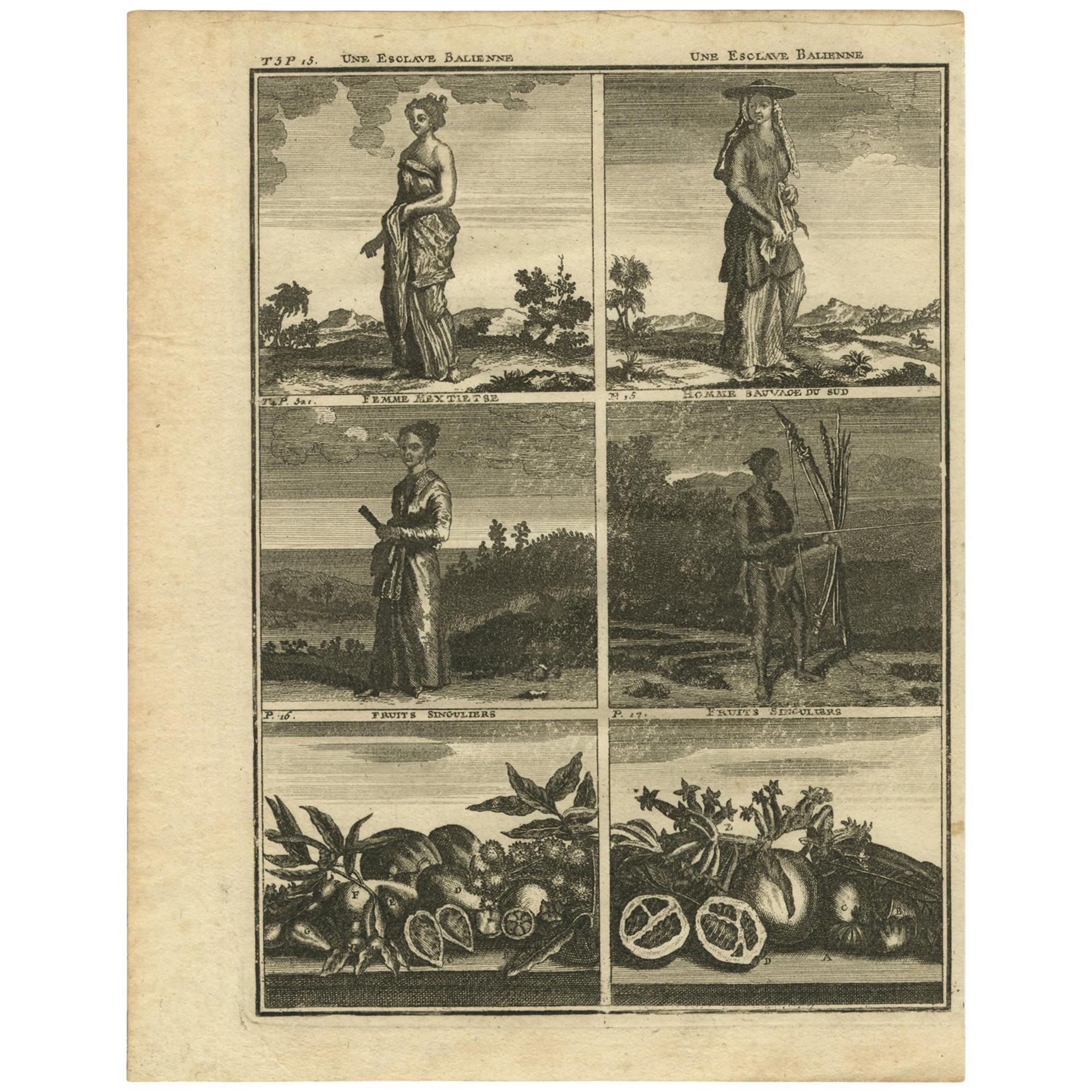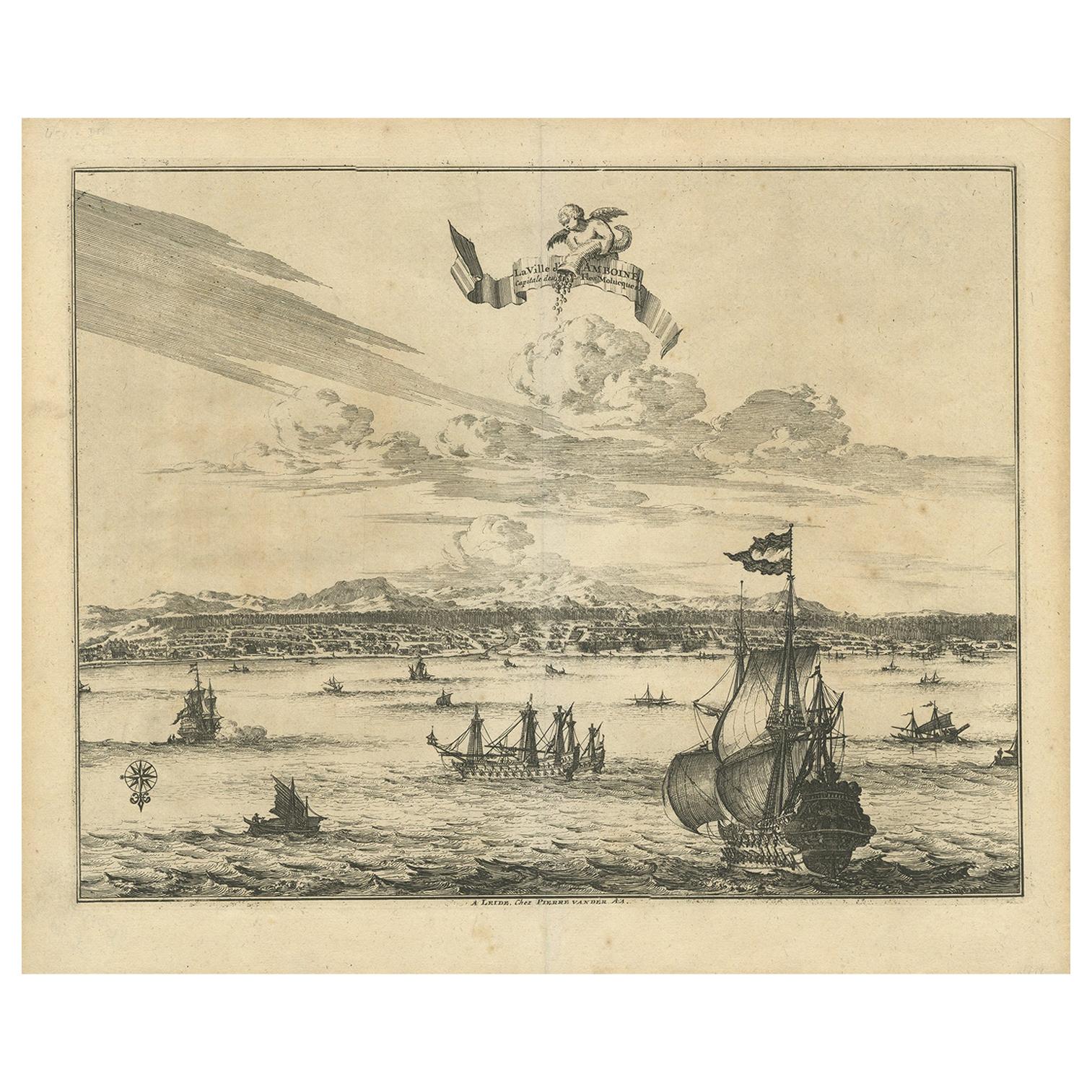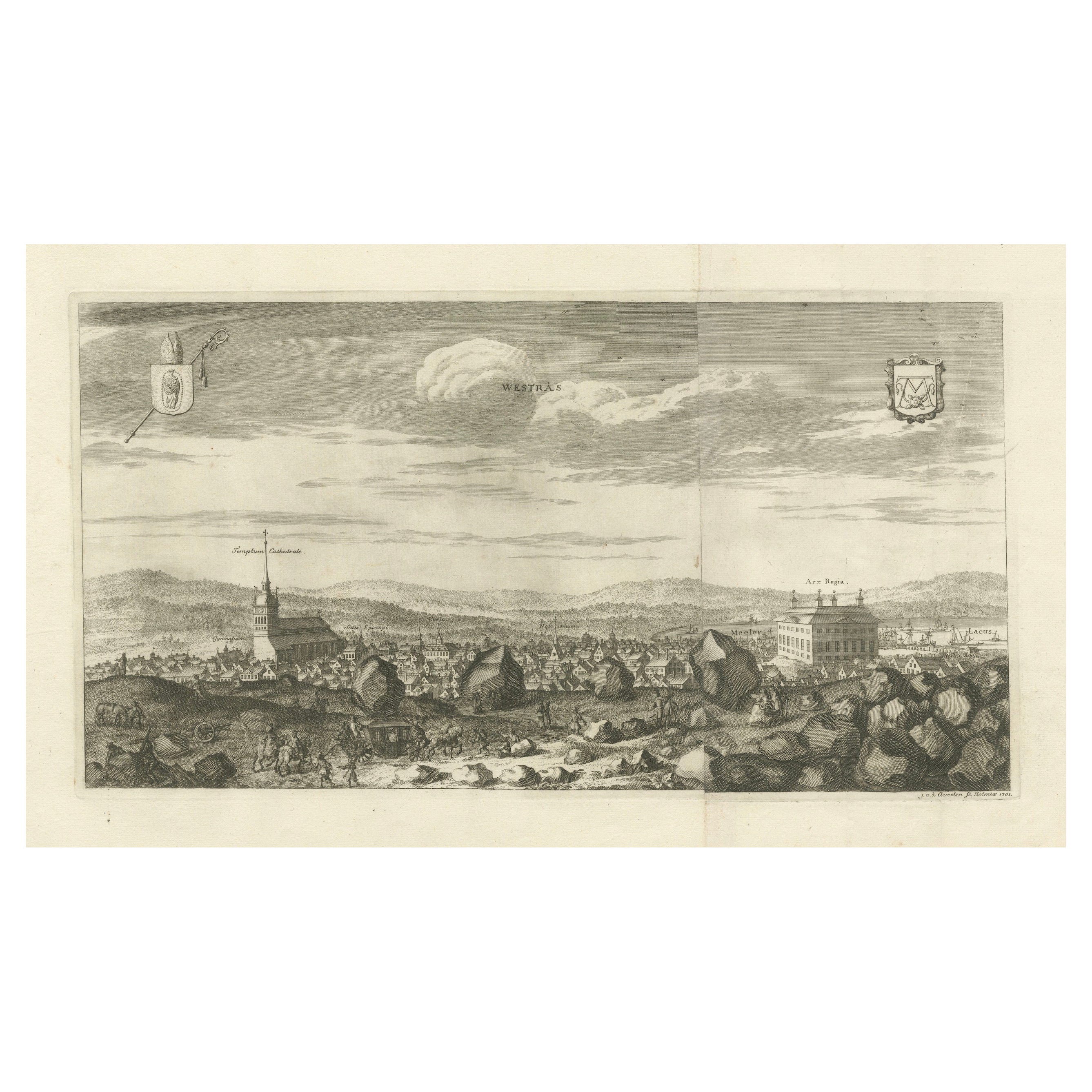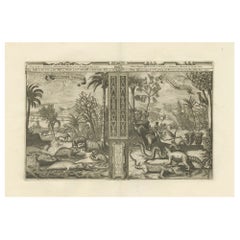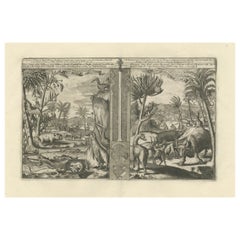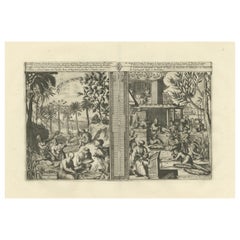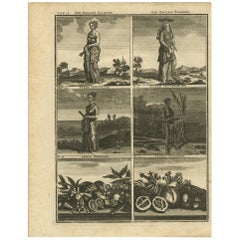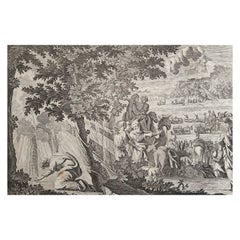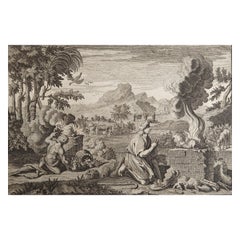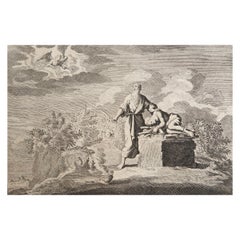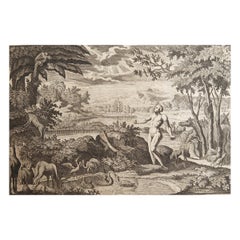Items Similar to Exotic Bounty: The Spice Lands of the East Indies by R. de Hooghe, circa 1708
Want more images or videos?
Request additional images or videos from the seller
1 of 9
Exotic Bounty: The Spice Lands of the East Indies by R. de Hooghe, circa 1708
$627.60
$784.4920% Off
£467.36
£584.2020% Off
€528
€66020% Off
CA$866.48
CA$1,083.1020% Off
A$960.62
A$1,200.7820% Off
CHF 504.84
CHF 631.0520% Off
MX$11,756.42
MX$14,695.5320% Off
NOK 6,304.98
NOK 7,881.2320% Off
SEK 5,917.86
SEK 7,397.3220% Off
DKK 4,020.02
DKK 5,025.0220% Off
About the Item
Exotic Bounty: The Spice Lands of the East Indies
The engraving depicts scenes from the East Indies, not the West Indies, which was a common point of confusion in historical texts due to the similar nomenclature.
Description of the Engraving:
This engraving titled "Exotic Bounty: The Spice Lands of the East Indies" is part of the series "Les Indes Orientales et Occidentales et autres lieux," emphasizing the global reach of colonial interests during the era of exploration. The artwork captures the lucrative spice trade that was central to European economic ambitions in the East Indies.
Left Panel:
- Cinnamon and Nutmeg Trees: Shows laborers harvesting cinnamon bark and processing nutmeg, which were highly prized in Europe for their culinary and medicinal uses. Monkeys in the cinnamon trees add a lively, exotic touch that would have intrigued European audiences.
- Foreground: A woman extracts oil from nutmeg, illustrating the diverse uses of spices sourced from these islands.
- Background: An elephant hunt in Ceylon (now Sri Lanka), pointing to the exotic wildlife of the region and the recreational activities of colonizers.
Right Panel:
- Clove Trees and Bamboo: Laborers harvest cloves, another valuable spice that drove European colonial ventures in the region.
- Background: The depiction of the Ternate volcano, an iconic landmark in the Maluku Islands, a significant center of the spice trade.
Artistic and Cultural Significance:
The detailed portrayal of these economic activities not only showcases the natural wealth of the East Indies but also reflects the colonial gaze that viewed these lands primarily as sources of economic profit. The inclusion of local flora like bamboo and scenes of spice processing offers a glimpse into the daily life and natural environment of the East Indies during the colonial era.
Historical Context:
This artwork serves as a historical document, revealing how the East Indies were integral to the spice trade networks that linked Asia and Europe. It provides insight into the colonial economies that were built around the extraction of valuable spices and the exploitation of both natural and human resources.
Overall, this engraving is a richly detailed piece that encapsulates the complex interactions between European colonizers and the landscapes they sought to dominate, making it a valuable piece for those interested in the history of colonialism, the spice trade, and Asian-European interactions.
The engraving is associated with two prominent figures in the art and publishing world of the 17th and early 18th centuries: Romeyn de Hooghe and Pieter van der Aa.
### Romeyn de Hooghe (1645-1708)
Romeyn de Hooghe was a Dutch Baroque artist known for his prolific and versatile artistic output. He worked as an engraver, painter, and draftsman. De Hooghe's engravings are renowned for their intricate detail and dynamic composition, making him one of the most important and innovative printmakers of his time. His works often included political, historical, and allegorical scenes, reflecting the complex social and political climate of the Dutch Golden Age. De Hooghe was also known for his satirical edge, often infusing his artwork with a keen critical perspective on contemporary issues.
### Pieter van der Aa (1659-1733)
Pieter van der Aa was an influential Dutch publisher based in Leiden, known for producing maps, atlases, and illustrated works. His publishing career was marked by the ambitious project of issuing atlases that incorporated a wide range of geographic knowledge and exotic illustrations from around the world. Van der Aa's works were highly esteemed for their decorative and detailed plates, which catered to the tastes of the European elite who were eager for knowledge about distant lands. His publications are notable for their meticulous attention to detail and their role in disseminating geographical and historical knowledge during the Age of Exploration.
### Collaboration and Impact
The collaboration between Romeyn de Hooghe as an engraver and Pieter van der Aa as a publisher brought together two masters of their respective crafts. Their works, such as the engravings depicting scenes from the East Indies, not only served as decorative pieces but also as educational tools that helped shape European perceptions of the wider world. These works are significant historical documents, reflecting the interplay between art, exploration, and commerce in the early modern period.
- Dimensions:Height: 14.97 in (38 cm)Width: 19.3 in (49 cm)Depth: 0 in (0.02 mm)
- Materials and Techniques:Paper,Engraved
- Period:1700-1709
- Date of Manufacture:circa 1708
- Condition:Condition: excellent, given age. General age-related toning and/or occasional minor defects from handling. Wide margins and folding line in middle as issued. Please study scans carefully.
- Seller Location:Langweer, NL
- Reference Number:Seller: BG-13810-31stDibs: LU3054341337722
About the Seller
5.0
Recognized Seller
These prestigious sellers are industry leaders and represent the highest echelon for item quality and design.
Platinum Seller
Premium sellers with a 4.7+ rating and 24-hour response times
Established in 2009
1stDibs seller since 2017
2,609 sales on 1stDibs
Typical response time: <1 hour
- ShippingRetrieving quote...Shipping from: Langweer, Netherlands
- Return Policy
Authenticity Guarantee
In the unlikely event there’s an issue with an item’s authenticity, contact us within 1 year for a full refund. DetailsMoney-Back Guarantee
If your item is not as described, is damaged in transit, or does not arrive, contact us within 7 days for a full refund. Details24-Hour Cancellation
You have a 24-hour grace period in which to reconsider your purchase, with no questions asked.Vetted Professional Sellers
Our world-class sellers must adhere to strict standards for service and quality, maintaining the integrity of our listings.Price-Match Guarantee
If you find that a seller listed the same item for a lower price elsewhere, we’ll match it.Trusted Global Delivery
Our best-in-class carrier network provides specialized shipping options worldwide, including custom delivery.More From This Seller
View AllTropical Paradise: The Diverse Fauna of the Indies by R. De Hooghe, circa 1708
Located in Langweer, NL
The engraving titled "Westindische Visserij" (West Indian Fisheries) is a fascinating artwork by Romeyn de Hooghe, printed by Pieter van der Aa, which vividly depicts the rich biodiv...
Category
Antique Early 1700s Prints
Materials
Paper
$627 Sale Price
20% Off
Colonial Curiosities: Fauna of the West Indies, by R. de Hooghe, circa 1708
Located in Langweer, NL
This original antique print is an intricate engraving from the early 18th century, titled "India Occidentalis," also known as the West Indies. Created by Romeyn de Hooghe, a distingu...
Category
Antique Early 1700s Prints
Materials
Paper
$627 Sale Price
20% Off
Global Harvests and Crafts: From the East Indies to Chinese Lacquerwork, c. 1708
Located in Langweer, NL
Drinks in East India; Lacquerwork and Paper from China. Tea, Cha and Palms / Plants and Trees of the East Indies // Lacquer Works / Wax Works, etc. in China (title on object). The East and West Indies and Other Places (series title)
Description: Presentation in two parts. On the left, the preparation of coconut drink, coffee, and chocolate. A man plucks coconuts from a tree. In the background, a tea plantation. On the right, lacquer work from China featuring a lacquer tree and lacquer workers...
Category
Antique Early 1700s Prints
Materials
Paper
$627 Sale Price
20% Off
Antique Print with Various Asian Scenes ‘Incl. Indonesia’ by C. De Bruin, 1728
Located in Langweer, NL
Rare print depicting six scenes titled 'Une Esclave Balienne, Une Esclave Balienne, Femme Mextietse, Homme Sauvage du Sud, Fruits Singuliers and Fruits Singuliers'. This print origin...
Category
Antique Early 18th Century Prints
Materials
Paper
$185 Sale Price
25% Off
Antique Print of Amboina by Van der Aa, circa 1725
By Pieter Van Der Aa
Located in Langweer, NL
Antique print titled 'Ville d'Amboine, capitale des Iles Molucques.' This view shows Amboina, the capital of the Molucca Islands, Indonesia. In the foreground several VOC and local s...
Category
Antique Mid-18th Century Prints
Materials
Paper
$427 Sale Price
20% Off
Westras: A Jan van Aveelen Engraving from 'Suecia Antiqua et Hodierna', 1701
Located in Langweer, NL
Original antique engraving of 'Westras' or Västerås in Sweden
The location referred to in the print is likely "Westras," which seems to be a historic name or variant spelling relate...
Category
Antique Early 1700s Prints
Materials
Paper
$427 Sale Price
20% Off
Free Shipping
You May Also Like
Original Antique Print after Jan Luyken, Amsterdam, Genesis XIII, 1724
Located in St Annes, Lancashire
Wonderful copper-plate engraving after Jan Luyken
Published by Marten Schagen, Amsterdam. 1724
Text on verso
The measurement given is the paper size.
Category
Antique 1720s Dutch Renaissance Prints
Materials
Paper
Original Antique Print after Jan Luyken, Amsterdam, Genesis IV, 1724
Located in St Annes, Lancashire
Wonderful copper-plate engraving after Jan Luyken
Published by Marten Schagen, Amsterdam. 1724
Text on verso
The measurement given is the paper size.
Category
Antique 1720s Dutch Renaissance Prints
Materials
Paper
Original Antique Print After Jan Luyken, Amsterdam, Genesis XXII. 1724
Located in St Annes, Lancashire
Wonderful copper-plate engraving after Jan Luyken
Published by Marten Schagen, Amsterdam. 1724
Text on verso
The measurement given is the paper size.
Category
Antique 1720s Dutch Renaissance Prints
Materials
Paper
Original Antique Print after Jan Luyken, Amsterdam, Genesis II, 1724
Located in St Annes, Lancashire
Wonderful copper-plate engraving after Jan Luyken
Published by Marten Schagen, Amsterdam. 1724
Text on verso
The measurement given is the paper size.
Category
Antique 1720s Dutch Renaissance Prints
Materials
Paper
Original Antique Print after Jan Luyken, Amsterdam, Genesis II, 1724
Located in St Annes, Lancashire
Wonderful copper-plate engraving after Jan Luyken
Published by Marten Schagen, Amsterdam. 1724
Text on verso
The measurement given is the paper size.
Category
Antique 1720s Dutch Renaissance Prints
Materials
Paper
Original Antique Print After Jan Luyken, Amsterdam. Genesis XVIII. 1724
Located in St Annes, Lancashire
Wonderful copper-plate engraving after Jan Luyken
Published by Marten Schagen, Amsterdam. 1724
Text on verso
The measurement given is the paper size.
Category
Antique 1720s Dutch Renaissance Prints
Materials
Paper
More Ways To Browse
Monkey Panels
17th Century Monkey
Dutch Colonial Ceylon
Bleached Mahogany Chest
Bombe Box
Brass Pineapples
Bronze Crocodile Sculpture
Bronze Koi
Bronze Lotus Leaf
Bronze Portico Clock
Campaign Writing Box
Capiz Table
Carved Ducks
Carved Giraffe
Carved Oak Cabinet French Bar
Casket Plate
Ceylon Ebony
Charles And Diana
